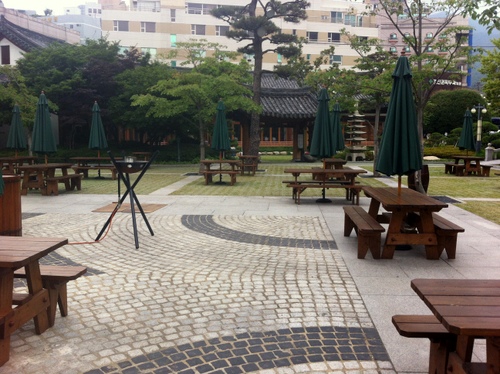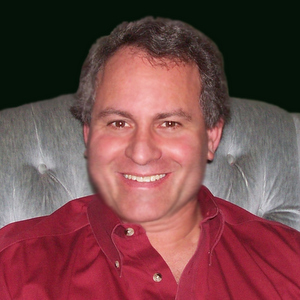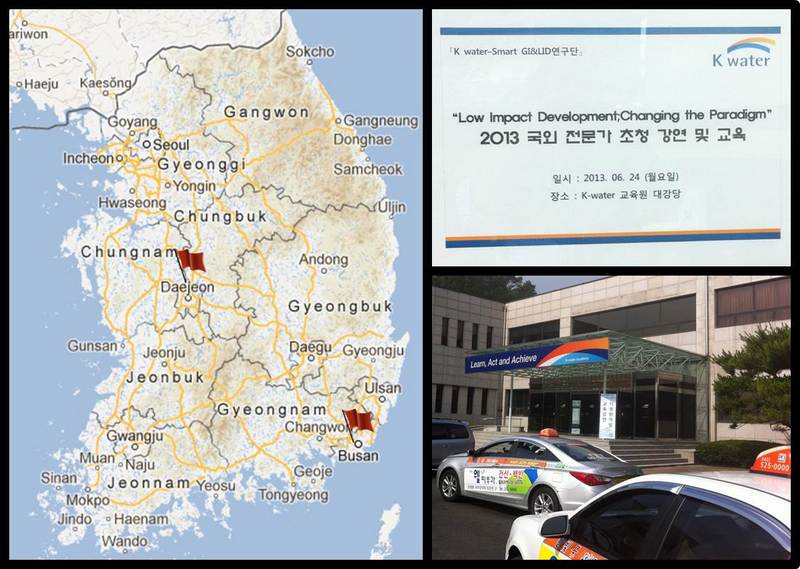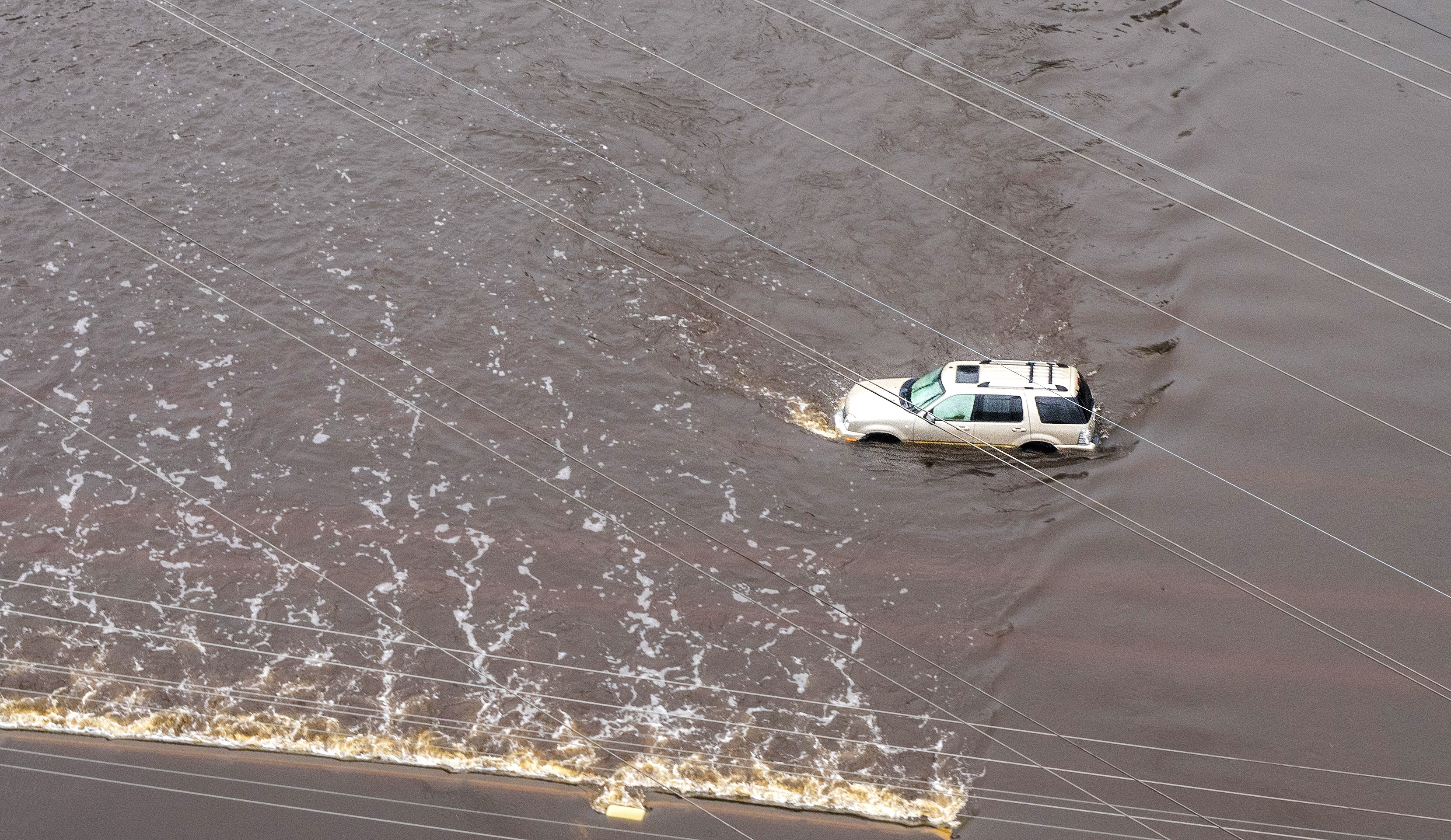________________________________________________________
I arrived in Busan, South Korea at 6:20 pm on Sunday for a Monday presentation on Low Impact Development. I was invited to present by Dr. Hyunsuk Shin of Pusan National University. He is head of a five-year research project to advance low impact development (LID) approaches, design specifications, codes, and regulations to implement LID in South Korea.
The presentation was held at the Korea Water Resources Corporation (K-Water) headquarters, located in Daejeon, South Korea, which is 1.5 hours north of Busan by train.
The presentation covered issues faced with conventional development and stormwater management. It included what LID is and how to apply it, types of LID systems and design specifications, and case studies from the U.S. There was also discussion about changing the regulatory framework to implement LID, particularly the differences between a “top down” and “bottom up” approach.

The restaurant across the street from my hotel is using concrete pavers with grass in an outdoor dining area.
Much of the discussion centered on how LID could be incorporated into the existing urban environment. We discussed how LID, such as planters adjacent to building walls and biofiltration systems located in sidewalks, can address water quality problems. However, due to urbanized soils, infiltration may not be possible in some of South Korea’s highly urban areas.
We also discussed implementing LID on silt and clay loam soils, as it appears that these are the dominant soil conditions based on attendee questions. An additional concern is that the groundwater table is fairly shallow in some locations, only being 61 cm (24 in.) or so below the ground surface.
Sponsoring organizations included the Ministry of Land, Infrastructure and Transport; K-water Institute; Pusan National University; Korea Institute of Construction Technology; Korea Engineering Consultants Corporation; the Land and Housing Institute; and KAIA. Approximately 140 engineers and government employees attended the presentation, which was about eight hours long.
On Tuesday, I will be visiting Eco Delta City, which is currently used for agriculture but is the location for a new Korean city. A key aspect of the development plan for Eco Delta City is to incorporate LID into the city’s design from the ground up. Due to the extremely variable topography in South Korea — relatively flat land located between steep mountainous areas —most development consists of tall buildings with small footprints to maximize the use of available land. After visiting Eco Delta City, I will be touring the LID testing facility at Pusan National University.






